Scarsdale Gamers Triumph in eSports Tournament
- Details
- Written by: Omar Thenmalai
- Hits: 5339
 As most of you have never heard of eSports, I feel that I should preface this article with one statement; it isn't what you think. eSports isn't tapping your screen like in Flappy Bird, or swiping back and forth like in Candy Crush. It is far more complicated. eSports is the term used to describe multiplayer competitive video games. The term encompasses popular games like Call of Duty, League of Legends, Starcraft II, and Dota 2. These games are usually seen as mindless time wasters or simple forms of entertainment to help procrastinate from ever more important school work. People often fail to see the strategy, practice, and teamwork needed to succeed in all of these games. As a long-time gamer, and now a high school senior, I am often questioned as to why I bother gaming. What they don't realize is that I compete in my "sport" just like any other athlete.
As most of you have never heard of eSports, I feel that I should preface this article with one statement; it isn't what you think. eSports isn't tapping your screen like in Flappy Bird, or swiping back and forth like in Candy Crush. It is far more complicated. eSports is the term used to describe multiplayer competitive video games. The term encompasses popular games like Call of Duty, League of Legends, Starcraft II, and Dota 2. These games are usually seen as mindless time wasters or simple forms of entertainment to help procrastinate from ever more important school work. People often fail to see the strategy, practice, and teamwork needed to succeed in all of these games. As a long-time gamer, and now a high school senior, I am often questioned as to why I bother gaming. What they don't realize is that I compete in my "sport" just like any other athlete.
High School Starleague (HSL) is a national eSports league that aims to give high schoolers a rewarding eSports experience, similar to traditional high school sports. Students represent their high schools, and face off against other high schoolers around the continent. HSL has leagues for various eSports including some big names that I mentioned before like League of Legends and Dota 2. Their philosophy is perfectly captured by their motto, "Study Hard, Play Hard." The league was founded in 2010, and since then has hosted a variety of events including online tournaments, inter-school scrimmages, and live charity events. These events have involved over 1,200 North American high schools and over 5500 students. HSL offers thousands of dollars in scholarship money for the winners of its leagues. This year alone the league has given out over $35,000 in scholarship money across four different eSports and thousands more in gaming gear and apparel.
Back in January, I enrolled in HSL's Dota 2  league with four friends. Dota 2, is an action real-time strategy game. Set in a mythical world of ogres, orcs, and dragons, two teams of five players start at opposite corners of a square map scattered with forests and rivers, and battle to take over the opponent's base. It sounds simple, but it gets more complicated. Each player pilots one of over 100 unique "heroes" each with their own set of unique abilities and traits. To make things even more complicated, players use gold accrued in game to purchase from a shop of over 100 different items. As an article in Bloomberg Business states, "The gameplay moves as fast as basketball, but the complexity of characters, weapons, and spells rivals Dungeons & Dragons." All of these aspects of the game are just a backdrop for the teamwork, communication, and strategy that are required to succeed.
league with four friends. Dota 2, is an action real-time strategy game. Set in a mythical world of ogres, orcs, and dragons, two teams of five players start at opposite corners of a square map scattered with forests and rivers, and battle to take over the opponent's base. It sounds simple, but it gets more complicated. Each player pilots one of over 100 unique "heroes" each with their own set of unique abilities and traits. To make things even more complicated, players use gold accrued in game to purchase from a shop of over 100 different items. As an article in Bloomberg Business states, "The gameplay moves as fast as basketball, but the complexity of characters, weapons, and spells rivals Dungeons & Dragons." All of these aspects of the game are just a backdrop for the teamwork, communication, and strategy that are required to succeed.
Enrolling under the Scarsdale High School banner, the five of us were thrown into a league of over 100 eager high schools teams. The tournament consisted of a 10-week Swiss bracket played from February to April. This group stage was then followed by tiebreakers, single-elimination playoffs, and the grand finals. The tournament took a hiatus during May, so students could study for AP exams. After beating out Chapel Hill School of North Carolina in the semi-finals, we triumphed over Jersey's Cherry Hill High School 3-1 to win the tournament. As a team of 5, we claimed $2,200 in scholarship money along with hundreds more in gaming peripherals. The prize was merely the cherry on top of the sundae that was claiming the title of best high school team in the country.
My experience was equally enjoyable and stressful. As the captain, I created the strategies, and led my team in game. Like a football or basketball team, we would analyze the "game film" of our next opponent before each match to help prepare for the games. Official matches took place every Sunday night around eight. This was often an issue as a given match would encompass two or three games, each averaging around an hour each, and would take up a lot of time we should have spent doing schoolwork. The greatest difficulty we faced was organizing practice. Unlike most student athletes, we didn't have the luxury of coaches and trainers. Our only source of motivation was internal. There was no one pushing us to work harder, practice more, and help us keep our eye on the prize. Being friends and teammates was also an issue. Separating a conflict in a game from our friendship was difficult without a mediating third party. Every member of the team had to set aside their ego at one point in time to resolve a conflict.
In the long term, I hope to help raise the status of high school eSports to that of conventional sports like football and basketball. With our victory, we hope to pave the way for high school eSports in Scarsdale and in neighboring towns.
Omar Thenmalai
Co-President – Scarsdale eSports Club
http://www.scarsdaleesports.org
https://www.facebook.com/scarsdaleesports
Reflections on Elie Wiesel
- Details
- Written by: Joanne Wallenstein
- Hits: 5426
 As long as one dissident is in prison, our freedom will not be true. As long as one child is hungry, our life will be filled with anguish and shame. What all these victims need above all is to know that they are not alone; that we are not forgetting them, that when their voices are stifled we shall lend them ours, that while their freedom depends on ours, the quality of our freedom depends on theirs. –Elie Wiesel
As long as one dissident is in prison, our freedom will not be true. As long as one child is hungry, our life will be filled with anguish and shame. What all these victims need above all is to know that they are not alone; that we are not forgetting them, that when their voices are stifled we shall lend them ours, that while their freedom depends on ours, the quality of our freedom depends on theirs. –Elie Wiesel
Elie Wiesel passed away on July 2, 2016. Rabbi Brown of Scarsdale Synagogue wrote the following about Wiesel which he shared with his congregants on July 4:
Dear Friends:
Greetings. I hope your Fourth of July has been meaningful... I trust, by now, that you have heard that Elie Wiesel, the noted author, scholar and activist, died this weekend. May his name live on to be for a blessing.
There is something poignant about noting his passing on this Fourth of July. His story, more than most, reminds us how preciously blessed we are to live in a country that enables us to be free. Let us never take that freedom for granted.
Wiesel is not our most important Jewish philosophical response to modern anti-Semitism. Theodor Herzl's writing (The Jewish State and Altneuland) - predating Wiesel and the Holocaust by forty years - grapples with the enduring discrimination of the Jewish People, and suggests that the founding of a Jewish State is a solution to it. And we have someone like Simon Wiesenthal (in The Sunflower) who raises the impossible question of forgiveness as it relates to the Holocaust itself.
Wiesel's genius was in his ability to bring his own personal story - and our people's collective story - to the people of the world. Because of his voice...how he used it in his own writing, and in the lectures and speeches that he delivered for decades...those inside and outside of the Jewish community were able to hear him, and listen to him, and learn from him.
No one in the (Jewish) world I grew up in ever mentioned Theodor Herzl or Simon Wiesenthal to me. I had a vague memory of a Holocaust survivor or two who spoke at my synagogue when I was younger. But the Holocaust was something inchoate and distant from me, until the Literature faculty of my mostly-non-Jewish high school in South Jersey had me read Wiesel's Night.
Suddenly - in the space of time that it took me to absorb his shocking and disturbing and heart-wrenching narrative - I had a new understanding of what it meant to be Jewish and what it meant to be human. Everything changed for me because of Wiesel, his story, and his book.
Because of his life's work, we have a sharper understanding of our past. And because of his life's work, we have a sharper understanding of our future, and the sense of responsibility that is an inherent Jewish part of living in a post-Holocaust world.
Officially, I want to encourage you to read Night if you haven't done so yet.
Beyond that: check out these two links that I hope you'll take a few minutes to explore to get a sense of Wiesel's unique and important voice:
In 2006, Oprah Winfrey chose Night as one of her Book Club's official selections. (There is no doubt that millions of new readers who might never have encountered Wiesel and the Holocaust did so because of Oprah's selection.) Click here for a brief video of the visit that Oprah made that year to tour Auschwitz with Wiesel.
In 2008, Wiesel participated in the public radio essay series "This I Believe." Click here for the full text and audio of his important reflection.
With gratitude for this festive day in which we celebrate our Freedom and Independence,
Rabbi Jeffrey Brown
STEP Celebrates DonTavius Holmes
- Details
- Written by: Joanne Wallenstein
- Hits: 6840
 The STEP Board (Student Transfer Education Plan) celebrated a successful two years for DonTavius Holmes in Scarsdale at the home of Lisa Rodman on June 23, the eve of the Scarsdale High School Graduation. By all accounts, DonTavius had a positive experience in Scarsdale and enriched the lives of everyone who got to know him. He was hosted by the Klein family of Heathcote Road and enjoyed the friendship of their son Josh Klein who is also a member of the class of 2016. Host mom Bettina Klein said that DonTavius fit right into the family and that as parents, they demanded the same high standards from him that they expected from their own children. To learn more about the STEP program, click here.
The STEP Board (Student Transfer Education Plan) celebrated a successful two years for DonTavius Holmes in Scarsdale at the home of Lisa Rodman on June 23, the eve of the Scarsdale High School Graduation. By all accounts, DonTavius had a positive experience in Scarsdale and enriched the lives of everyone who got to know him. He was hosted by the Klein family of Heathcote Road and enjoyed the friendship of their son Josh Klein who is also a member of the class of 2016. Host mom Bettina Klein said that DonTavius fit right into the family and that as parents, they demanded the same high standards from him that they expected from their own children. To learn more about the STEP program, click here.
http://www.scarsdalestep.org/
DonTavius embraced all that Scarsdale had to offer – playing basketball and football and holding a job at the Scarsdale Congregational Church. When the basketball team travelled to Gainesville, Florida, Coach Scagnelli invited him to come along. DonTavius said his time here was a "great experience" and that his "many moms" on the STEP Board who supported him here. He thanked Dean Michael Gibbs, and teachers Robert Draper, Tom Maguire, Rashid Silvera, Stephen Mounkhall and Elise D'Ammora and all his friends in the Dale.
His mom Angelesa and sister Diamond came up to New York for the graduation and posed proudly for photos with DonTavius who will attend Oxford College in Atlanta in the fall.
Here is the toast given by STEP Co-Chair Nan Berke to DonTavius at the celebration:
DonTavius, it has been an incredible pleasure having you be a part of STEP these past two years. As I've said to you many times before, we are all so proud of you and all that you have accomplished. You had a lot of help along the way, so I want to start by acknowledging those who were key to your success:
Thank you to the Kleins for being a great host family. You taught DT so much, took good care of him and were incredibly generous with our time and in sharing your home with him. As someone who was in your shoes just a year ago, I know how bittersweet this experience must be for you. Although hosting is not for the feint of heart, I'm betting you got just as much from this experience as you put into it.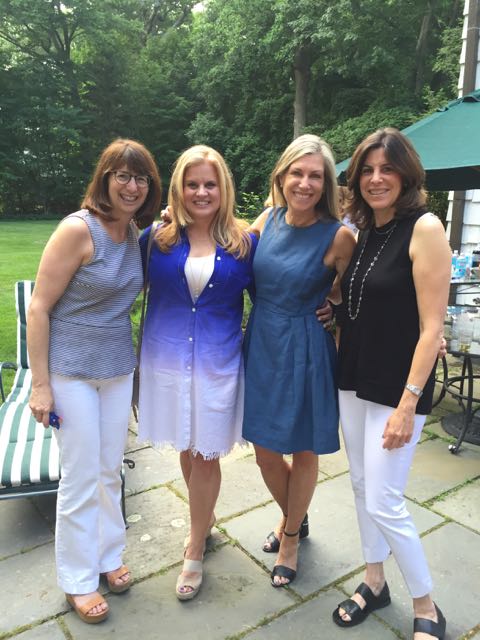 Thank you for taking the leap of faith and saying 'yes' to hosting a STEP student.
Thank you for taking the leap of faith and saying 'yes' to hosting a STEP student.
To Collegistics and Lisa and Lillian in particular, thank you for all you did for helping our young man get into the college of his dreams. During the thick of it, DT it seemed as if you might have perceived them as being a bit of an annoyance, pestering you to do a huge amount of work. But guess what? These women really know their stuff and got you to where you want to be.
The same can be said about Susan Groner who helped you with your scholarship applications. She is such a nice person, she just plugged away at getting DT money whether he was involved or not. We know you were watching DT, and see now that it takes a lot of patience and methodical grunt work to work through the college process and getting college funded. What you've learned from Lisa, Lillian and Susan will stand you in good stead throughout your life.
Julie and all the Stonbergs, thank you for being DT's home away from home away from home buddy family. You took him to Nashville to see Vanderbilt and to Florida to see an ocean. He clearly loves being with you all and made this experience much more comfortable for him.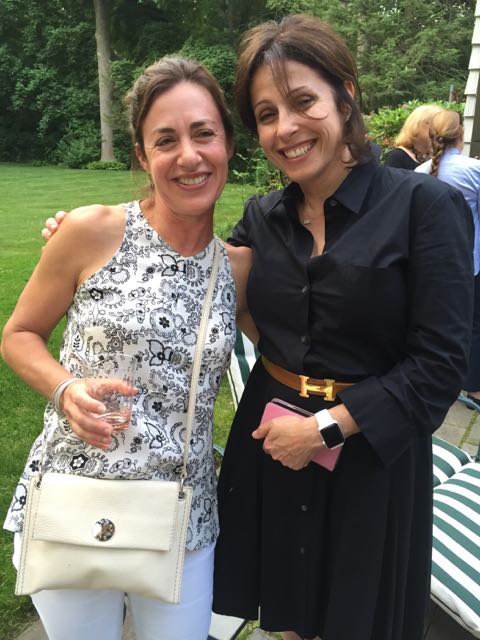
A thank you to Dean Gibbs for being the awesome dean that you are and to SHS for generously agreeing to enroll DT and educate him so well. Thanks to the STEP Presidents, Valerie, Debra and myself here while DT was in Scarsdale and to the STEP Board for all you did for the Kleins and for DT, and finally, thanks to Angelesa and Diamond for sharing your son and brother with us.
DonTavius you have an irrepressible charm and a bigger than life personality. I believe this year's senior class has 384 students and my guess is close to 100% of the class knows or loves you to varying degrees. Younger kids are drawn to our Mufasa too.
You are just fun to be around. These past two years you've grown and matured immensely. You're willing to let the little things slide now. You follow through and work hard.
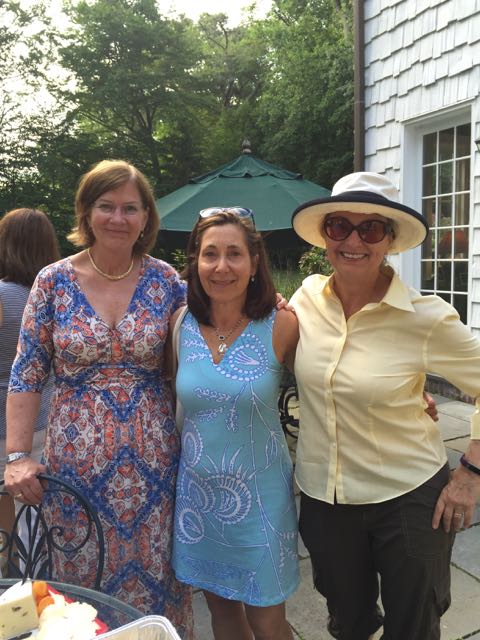 You are an athlete devoted to your teams and someone who bonded strongly with his coaches. Sports can teach you a lot about life, and I think you learned that very well.
You are an athlete devoted to your teams and someone who bonded strongly with his coaches. Sports can teach you a lot about life, and I think you learned that very well.
You excelled academically while in Scarsdale. Could you have worked a bit harder at times? ...Maybe. Hopefully you have been saving the full throttle academic setting for college.
Several times you've said that life in Memphis is like a crab pot and everyone is trying desperately to crawl up the sides of the pot and get out. Well, DT, you are out of the pot. Wherever you go, who ever you become, we all have the greatest confidence you will be a huge success and do exciting things.
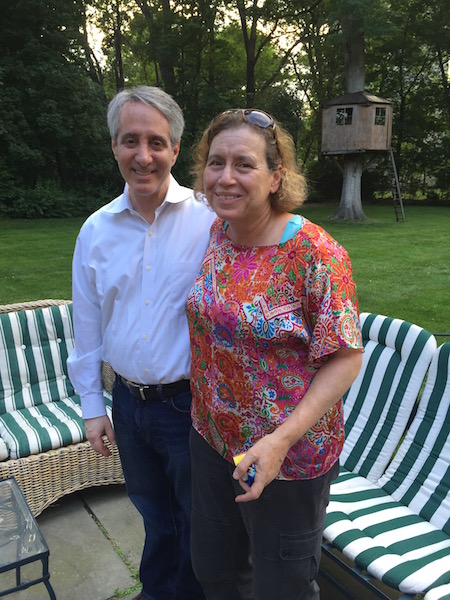
Scarsdale Speech and Debate Team Excels at National Championship in Salt Lake City
- Details
- Written by: Joanne Wallenstein
- Hits: 8559
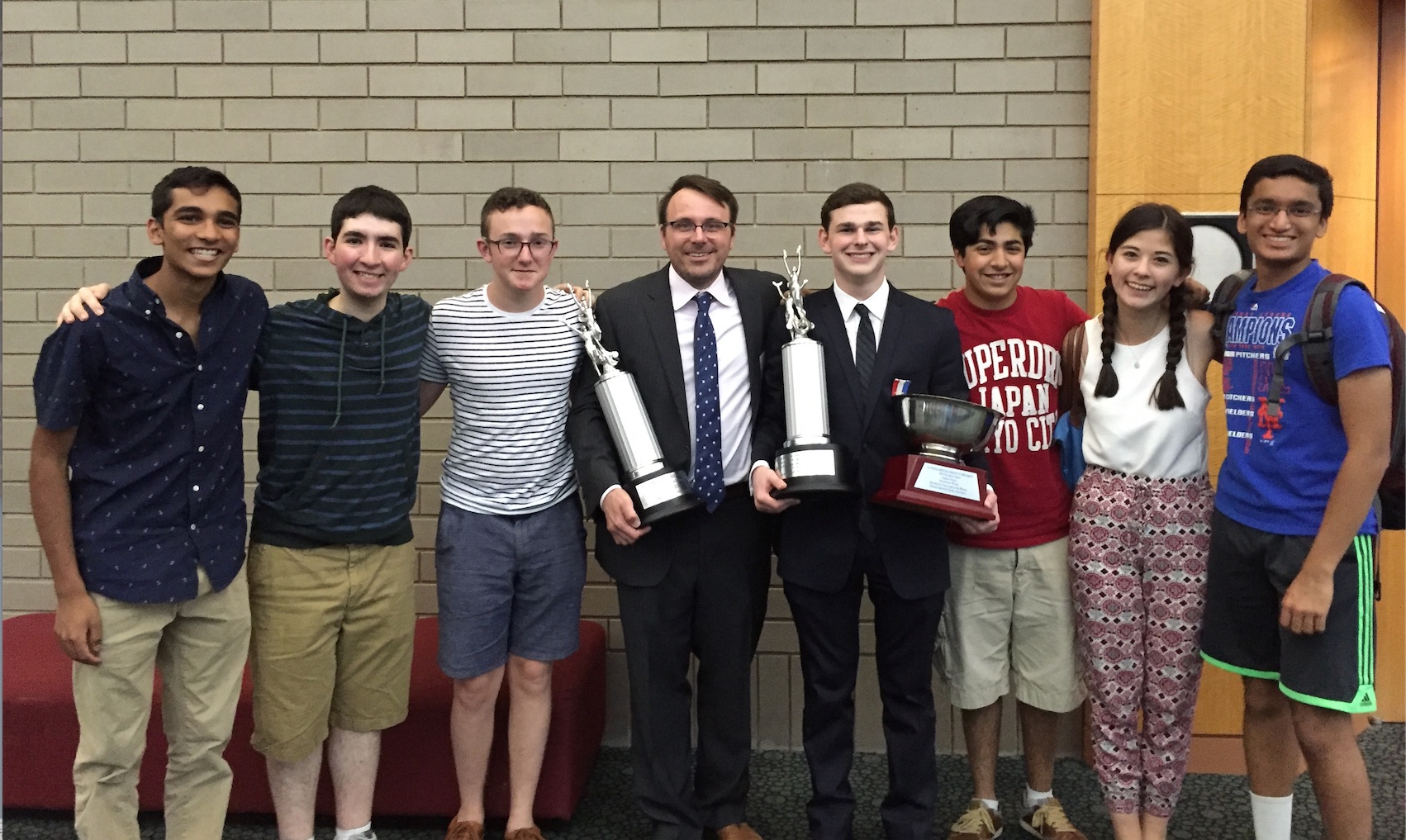 Scarsdale students set new records at the NSDA National High School Speech and Debate Championship tournament in Salt Lake City from June 12-17. The tournament brought together over 5,000 of the top speech and debate students representing high schools from all fifty states, as well as some international students. Students must pre-qualify to participate in the championship. Scarsdale High School sent a squad of seven students to represent the Hudson Valley region in the tournament. It was a record setting event for Scarsdale in several aspects.
Scarsdale students set new records at the NSDA National High School Speech and Debate Championship tournament in Salt Lake City from June 12-17. The tournament brought together over 5,000 of the top speech and debate students representing high schools from all fifty states, as well as some international students. Students must pre-qualify to participate in the championship. Scarsdale High School sent a squad of seven students to represent the Hudson Valley region in the tournament. It was a record setting event for Scarsdale in several aspects.
First, Scarsdale High School senior Justin Cooper, a two-time NY state champion, became the first Scarsdale student to reach the final round at nationals since 2011. He also is the first student in Scarsdale history to reach the final round in his event (original oratory). After 13 rounds of competition and from a pool of 256 elite competitors, Cooper placed third in the nation in original oratory (winning a trophy and a $750 college scholarship). He also garnered first place in the final round of competition, winning the President's Bowl award and a $250 scholarship. Cooper finished his career at Scarsdale High School as the "winningest" speech and debate student in Scarsdale history, surpassing the former record-holder by nearly 800 NSDA points (points are accumulated during a student's high school career and are awarded based on success at tournaments).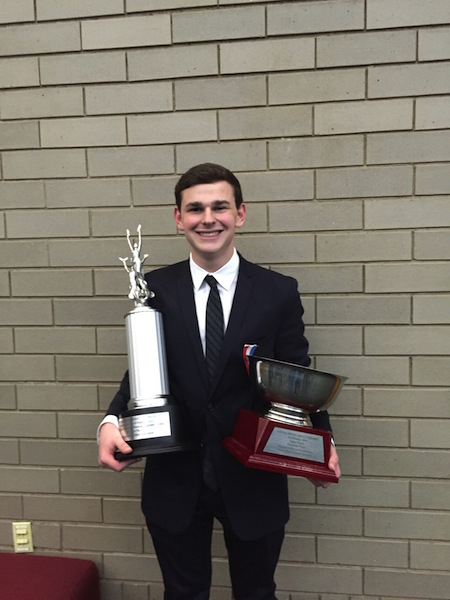
In addition, Scarsdale won a "School of Excellence" award for the first time ever. This award is given to the top 20 schools in total speech points at the national tournament. Two Scarsdale students, juniors Zach Kapner and Keshav Rastogi, were quarterfinalists in extemporaneous speaking (top 30), and senior Daniel Altabet was an octofinalist in original oratory (top 60). Their tournament points, along with Cooper's, combined for the team award. In addition, sophomore Arjun Ravi was a semifinalist in extemp commentary, and sophomores Zoe Landless and Ismail Ameen represented Scarsdale High School as well. Coach Joe Vaughan accompanied the team for the competition.
Emily Hirsch Celebrates her 99th Birthday
- Details
- Written by: Joanne Wallenstein
- Hits: 6005

We asked her to tell us the secret to her longevity and here is her advice:
- Get up everyday and go about your business
- Be happy
- Hopefully have good genes
Emily has been running her store on Spencer Place for 49 years and is one of Scarsdale's favorite retailers. The store has a wonderful collection of cards, candy and gifts with the bonus of Emily behind the counter to greet you.
Happy Birthday Emily! Wishing you a century of happiness in Scarsdale.












